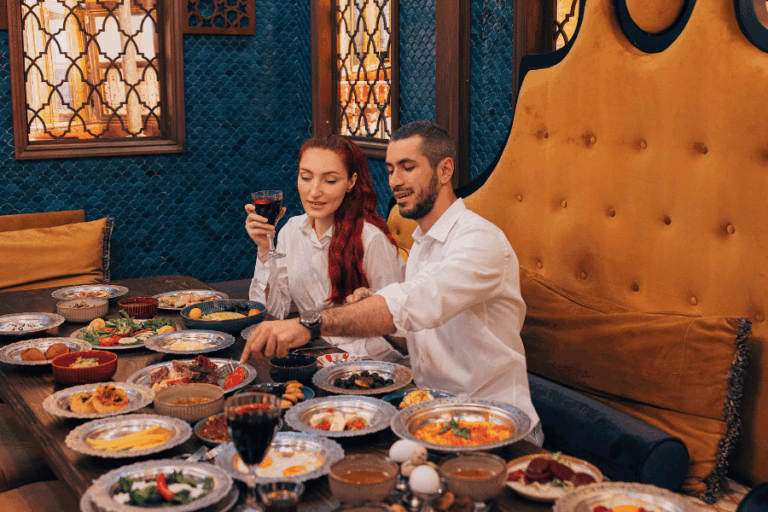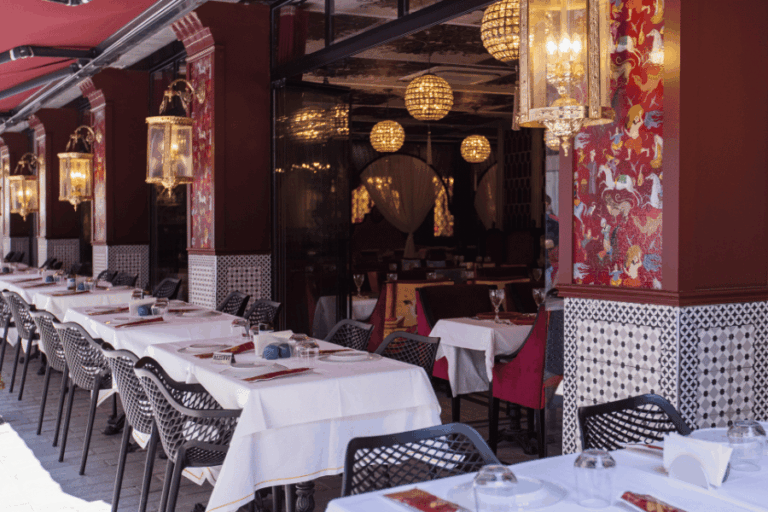Turkish cuisine is one of the richest and most appetizing cuisines in the world. Turkish food culture is known that people are very passionate about eating and drinking.
The variety and flavor of the dishes, influenced by its rich history, have made Turkish cuisine famous around the world. Today, Turkish cuisine can be said to have special recipes in every region of the country. Each region boasts its own specialties.
The richness of Turkish cuisine is based on several factors:
- The diversity of crops grown in Asia and Anatolia,
- Countless cultural interactions throughout history,
- The palace kitchens of the Seljuk and Ottoman empires
- Geographical conditions
Turkish culinary art has a long and deep-rooted history. The culinary culture of the Istanbul, Bursa, and Izmir regions inherited many elements of the vast Ottoman cuisine.
Marmara, Aegean and Mediterranean cuisines are rich in vegetables, fresh herbs, and fish. Olive oil is widely used in most dishes.
Fish, especially Black Sea anchovy, is used extensively in the cuisine of the Black Sea region. It is also influenced by Balkan and Slavic cuisine.
Southeastern cuisine -Urfa, Gaziantep and Adana- is famous for its kebabs and desserts such as baklava, kadayif and künefe. Central Anatolia has its own flavors such as keşkek, mantı and gözleme.
Istanbul, on the other hand, is a city where almost every kind of cuisine can be tasted due to the multicultural nature of the metropolis.
Beyoğlu, Sultanahmet, and Kadıköy in particular are the neighborhoods where heavenly delicacies can be found. In addition to Western food, which is offered as an abundant alternative, there are many dining venues that specialize in their own fields, such as traditional food restaurants, artisan restaurants, and seafood restaurants.
You can visit one of these restaurants, Deraliye Restaurant, which serves Ottoman Palace Cuisine dishes.
The main ingredients of Turkish dishes are meat, vegetables, and legumes, and they usually have the consistency of soup. For this reason, bread consumption is very high among Turks. Turkish kebabs, manti, and some eggplant dishes are the hallmarks of Turkish cuisine. There are more than 200 dishes made from eggplant.
Breakfast is an important part of Turkish culinary culture. Although it varies regionally, Turkish breakfast is the healthiest, most nutritious, and most delicious. Breakfast includes lots of greens, tomatoes (preferably in summer), cucumbers, and peppers, as well as feta cheese, eggs, olives, honey, and milk in cream. Village grain bread, cornbread, and bagels, sesame seed buns, and bagels are the preferred breakfast ingredients. Sunday breakfasts in particular turn into a pleasant social gathering with added ingredients and last longer than weekday breakfasts.
Turkish kebabs are the main meat dish with a wide variety of cooking methods. There are many types of kebabs such as Döner Kebab, Adana Kebab, Bursa Kebab, Ali Nazik, and Iskender. Kebabs have various cooking methods depending on the ingredients and the way they are made and are usually served with pilaf, bulgur pilaf, and greens.
Another meat specialty is meatballs. It entered Turkish cuisine in the 13th century. There are many types of meatballs and the cooking technique varies according to the region. There are more than 200 different types of meatballs in Turkey.
Lahmacun, a thin flat bread covered with a layer of spicy minced meat, is another popular food served with a cold drink, ayran. Among other Turkish dishes, bean soup and pilaf are indispensable food duo. Often served in the form of soup over rice and rich in carbohydrates and protein, this menu is very popular with Turks.
Aegean and Mediterranean cuisines are mostly cold dishes with olive oil as the main course or appetizer. Especially dolma (stuffed peppers, zucchini, etc.), red kidney bean stew (red kidney bean salad with olive oil), and sea beans (seasonal sea beans) are ‘must-taste’ specialties. Pasta is almost similar to the pasta of Italian cuisine. Turkish homemade pasta is called noodles, prepared with walnuts, feta cheese or various sauces.
There are more than 300 types of soup in Turkish cuisine. The basic ingredient of soup is yogurt. A Turkish contribution to the world, sweet or sour yogurt has become a prominent ingredient in soups. Seafood and cattle meat is also often used in Turkish soups. Soups made with thin rockfish, haddock, or other fish are all classified as “fish soup”.
Turkish pastries are mostly milk-based or dough-based desserts. Sweet pastries, especially baklava, are soaked in sherbet. Baklava, sütlü nuriye and ekmek kadayif are among the most popular desserts. Baked rice pudding, keskül, and profiteroles are the most popular Turkish dairy desserts. Although künefe, a pastry made of melted wheat, is native to the south, it is easily available in Istanbul.
Tea is an essential drink for every Turk. Tea is served during breakfast and is drunk almost all day long. Especially if you are invited to a store or office, tea is ordered immediately. After meals, Turkish Coffee is also part of a Turk’s daily habits.
Ayran is the most common cold drink made by mixing yogurt with water and salt. Sometimes a piece of fresh mint is added. An ideal drink on hot summer days, it is bottled, packaged, or homemade.
People in Turkey love to eat and cook. Most meals in a typical Turkish home are like a feast. If you are a guest for breakfast, lunch or dinner, the variety of food and the sincere hospitality of the people can be quite surprising at first. Inviting guests to dinner is part of the culture and tradition of the Turkish family and ‘taking good care of the guest is a crucial aspect of this.
An overview of Turkish food varieties
Soups: Soups are usually served before the main course, especially in winter.
Appetizers: Appetizers with olive oil, mostly served cold.
Dolma & Sarma: Vegetables or stuffed leaves stuffed with rice or meat.
Salads: A variety of salads from different regions.
Olive Oil Dishes: Vegetable dishes with olive oil, usually eaten cold.
Pilafs: Rice or bulgur pilaf varieties.
Meat dishes: Meat dishes are made mostly with vegetables.
Pastries: Stuffed or rolled pastries filled with meat, cheese, or vegetables.
Pita bread: Pita bread with cheese, vegetables, or meat.
Kebabs: Varies from kebabs cooked in pots to shish kebabs.
Fish and Seafood: Fish and other seafood such as shrimp and squid.
Desserts: Desserts range from dairy flavors to baklava pastries.








